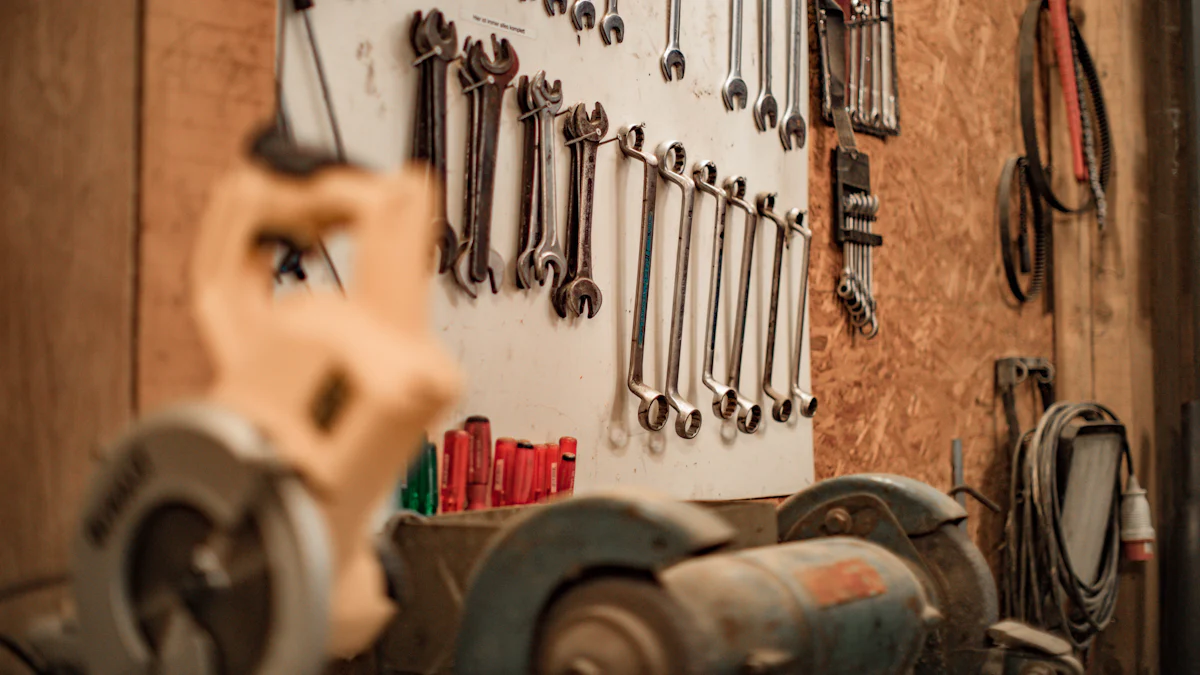 Maintaining clean hand tools is crucial for ensuring their performance and longevity. Regular cleaning of hand tools helps them function efficiently and safely. Clean tools also prevent rust and wear, extending their lifespan. To get started, gather essential supplies such as cleaning agents, brushes, cloths, and protective gear.
Maintaining clean hand tools is crucial for ensuring their performance and longevity. Regular cleaning of hand tools helps them function efficiently and safely. Clean tools also prevent rust and wear, extending their lifespan. To get started, gather essential supplies such as cleaning agents, brushes, cloths, and protective gear.
Preparing for Cleaning
Gathering Necessary Supplies
Cleaning agents
Choose the right cleaning agents for your hand tools. Use mild soap and water for general cleaning. For tougher grime, consider using a solvent cleaner. Ensure the cleaning agent suits the material of your tools. Avoid harsh chemicals that can damage the tools.
Brushes and cloths
Select appropriate brushes and cloths. Use a stiff bristle brush to remove dust and dirt. Soft cloths work well for wiping down surfaces. Microfiber cloths help in polishing and drying. Keep several cloths handy for different stages of cleaning.
Protective gear
Wear protective gear to stay safe. Use safety glasses to protect your eyes. Sturdy work gloves shield your hands from sharp edges. Rubber or latex gloves are essential when using cleaning agents. Heavy footwear prevents injuries from dropped tools.
Setting Up a Cleaning Area
Choosing a well-ventilated space
Pick a well-ventilated space for cleaning. Proper ventilation helps disperse fumes from cleaning agents. An open garage or outdoor area works best. Ensure the space has good lighting to see all parts of the tools clearly.
Organizing tools and supplies
Organize your tools and supplies before starting. Lay out all cleaning agents, brushes, and cloths. Arrange tools in a way that makes them easy to reach. Use a table or workbench to keep everything at a comfortable height. This setup ensures an efficient and smooth cleaning process.
Cleaning of Hand Tools
Cleaning Metal Tools
Removing rust
Rust can damage metal tools. To remove rust, soak the tools in white vinegar for a few hours. Use a wire brush to scrub off the rust. Rinse the tools with clean water. Dry the tools thoroughly to prevent further rusting.
Polishing and lubricating
Polishing metal tools keeps them shiny. Use a metal polish and a soft cloth. Apply the polish in small circular motions. Wipe off any excess polish with a clean cloth. Lubricate moving parts with machine oil or WD-40. This prevents friction and ensures smooth operation.
Cleaning Wooden Handled Tools
Wiping down handles
Wooden handles need special care. Use a damp cloth to wipe down the handles. Remove any dirt or grime. Avoid soaking the wood to prevent swelling. Dry the handles with a clean towel.
Treating with oil
Treat wooden handles with oil to keep them in good condition. Use linseed oil or mineral oil. Apply a small amount of oil to a cloth. Rub the oil into the wood. Let the oil soak in for a few hours. Wipe off any excess oil with a dry cloth.
Cleaning Tools with Plastic or Rubber Parts
Using appropriate cleaners
Plastic and rubber parts require gentle cleaning. Use mild soap and water. Avoid harsh chemicals that can damage the materials. Scrub the parts with a soft brush. Rinse with clean water. Dry the parts thoroughly.
Avoiding damage to materials
Prevent damage to plastic and rubber parts. Do not use abrasive cleaners. Avoid exposing the parts to extreme temperatures. Store the tools in a cool, dry place. This helps maintain the integrity of the materials.
Drying and Storing Hand Tools
Proper Drying Techniques
Air drying
After cleaning hand tools, ensure thorough drying to prevent rust. Place the tools on a clean surface in a well-ventilated area. Allow the tools to air dry completely. This method works well for most hand tools.
Using cloths or towels
For quicker results, use cloths or towels to dry hand tools. Choose absorbent materials like microfiber cloths. Wipe down each tool carefully, paying attention to crevices and joints. Ensure no moisture remains on the tools.
Storing Tools to Prevent Future Damage
Using toolboxes or racks
Proper storage extends the life of hand tools. Use toolboxes or racks to keep tools organized. Toolboxes offer protection from dust and moisture. Racks allow easy access and visibility. Both options help maintain the condition of the tools.
Keeping tools in a dry place
Store hand tools in a dry place to prevent rust and corrosion. Avoid damp areas like basements or sheds without proper ventilation. Choose a location with consistent temperature and humidity levels. Regularly check the storage area for signs of moisture.
Expert Testimony:
Tend Industrial Supplies emphasizes, “Regular maintenance not only prolongs the life of your tools but also ensures safety and efficiency in your tasks.”
At the end of each workday, clean and store all used tools properly. Examine tools for broken, loose, or worn-out parts. Repair any issues before storing the tools. Label tools needing maintenance and leave them in a designated location for appropriate action.
Regular cleaning of hand tools ensures their longevity and efficiency. Clean tools perform better and remain safe to use. Consistent maintenance prevents rust and wear. Make a habit of cleaning tools after each use. Use appropriate cleaning agents and methods for different materials. Store tools in a dry place to avoid damage. Remember, well-maintained tools are an investment in your work’s quality and safety.
Tend Industrial Supplies emphasizes, “Regular maintenance not only prolongs the life of your tools but also ensures safety and efficiency in your tasks.”
